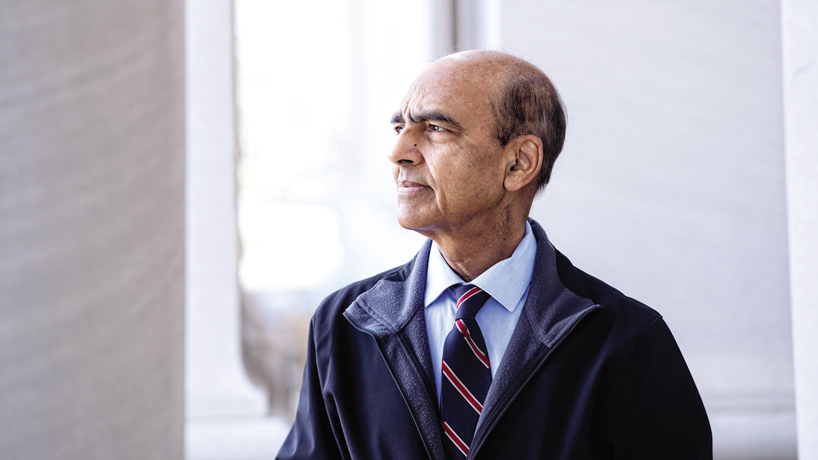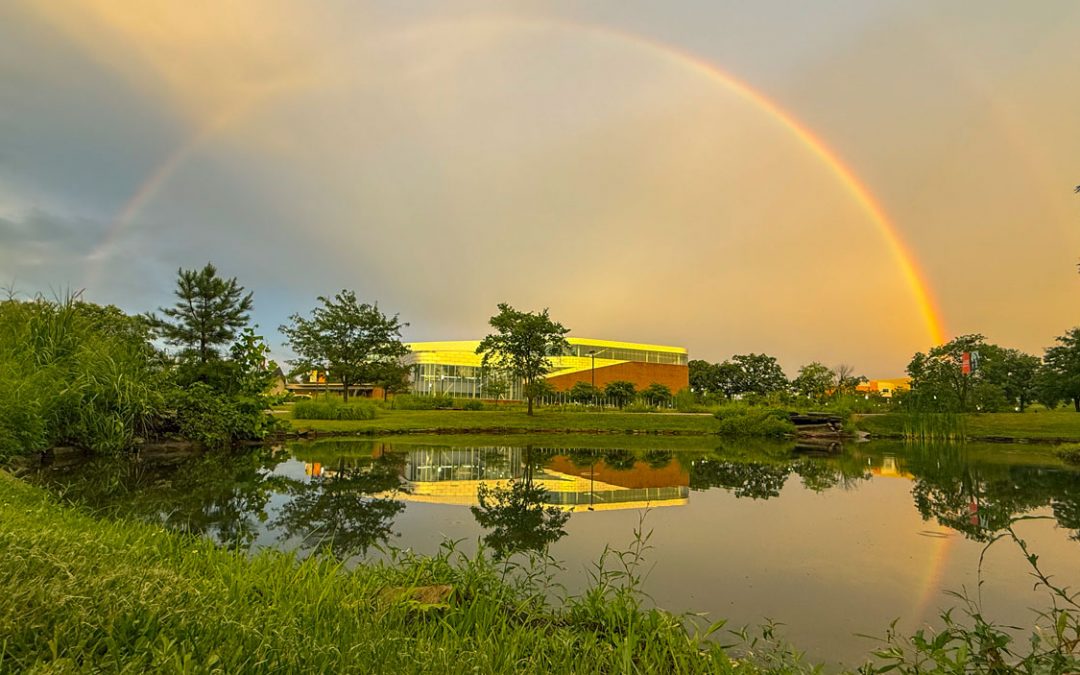
Lav Gupta, an assistant professor of computer science, worked in telecommunications in India and helped build the backbone network for high-speed internet access the country before going into academia. Now he’s working with the University of Missouri System Broadband Initiative to bring high-speed internet access to rural communities in Missouri. (Photo by August Jennewein)
A team of individuals from across the University of Missouri System have been working for more than two years to find ways to improve access to broadband in rural communities throughout the state.
The COVID-19 pandemic has crystallized the importance of those efforts.
“Not only does it have such an impact in the economy and in education, but if you want people to really improve their health – in particular, in times of great distress with children not being able to go to school in their normal day and needing to be educated at home, with people trying to get access to information and ultimately get registered, so they could go get the shot they needed so that they could avoid COVID-19 – we saw how important it was again,” UM System Chief Engagement Officer Marshall Stewart said June 23 as he kicked off a webinar highlighting the latest developments in the UM System Broadband Initiative.
Lav Gupta, an assistant professor of computer science at the University of Missouri–St. Louis, was involved in the planning and dry run of the 90-minute virtual event. He also contributed to the development of the Digitally Connected Communities Guide his colleagues demonstrated as a central piece of the proceedings. Gupta will also be part of the MU Extension cohort providing training for the guide.
The soon-to-be released online course is designed to empower community leaders, planners and stakeholders to navigate the complicated process to help their communities become digitally connected.
Gupta has an invaluable perspective because of his experience in the field. Before he came to the United States to pursue his PhD in computer science and engineering at Washington University in St. Louis or joined the faculty at UMSL, he was working with organizations involved in planning, deployment and operation of telecommunications and ISP networks in his native India.
From 2003 to 2007, Gupta was the deputy director general at BSNL, a government-owned telecommunications service and ISP provider headquartered in New Delhi. He led the team planning and building the networks needed to bring broadband access to hundreds of cities and villages across the country.
“We planned the complete system methodically,” Gupta said. “The backbone network was planned with carrier grade routers and fiber-optic links forming an extensive network with a meshed core and a dual connected edge all spread out about a hundred cities and carrying national and international traffic. The access network was built with the state-of-the-art ADSL 2 plus technology to deliver high speed broadband to subscribers in hundreds of cities and towns. This network was later extended to rural areas.”
When broadband service launched in 2005, starting simultaneously in Mumbai, Kolkata, Chennai, Hyderabad and Delhi, Gupta and his team did not have any prior marketing experience to depend on. They did not have any idea of what kind of demand was going to hit them.
It only took about three months before they reached one million connections – Gupta keeping track of each of them with nightly reports from teams in each of the cities. It wasn’t much longer after that that they had exhausted all six million connections that were part of their initial planning.
“It just picked up,” Gupta said. “People were hungry for broadband.”
Gupta left BSNL in 2007 and became a principal advisor for the Telecom Regulatory Authority of India and an administrator in the Department of Telecommunications, but his time leading the teams that made regulations for networks and tested the products that went into live networks. These assignments showed him what internet service providers look for as they make decisions about deploying their services.
That’s proved useful in thinking through what is needed to build the infrastructure necessary to bring broadband to the approximately 20 percent of Missourians – most of them living in rural areas – who don’t have it.
“Having worked in both deploying and regulating ISPs’ networks, I make use of my experience to help other members of the broadband initiative appreciate how the ISPs are going to react to different stipulations in the RFPs,” Gupta said. “Or whether they will accept this or they will not accept that. I know how an ISP’s’ psyche works. There are certain things they will never agree to.
“If you have a project and say, ‘OK, deploy 5G in this county,’ they are not automatically going to get into the county with 5G if it is not viable for them. They’ll only do something that makes financial sense to them.”
Many of his insights are included in the Digitally Connected Community Guide.
Gupta started moving away from broadband about 10 years ago, around the time he began contemplating his pursuit of a PhD and getting into academia. His interests shifted toward other research intensive areas like multi-cloud, next generation networks, cybersecurity and artificial intelligence.
His dissertation was titled “Management And Security Of Multi-Cloud Applications.”
Gupta expected those would remain the central topics of his work as he joined the faculty at UMSL. But not long after starting his new position in 2019, he received an email asking if he’d like to take part in the UM System Broadband Initiative.
“It was from Dean Barbara Glesner Fines, inviting me to be part of the UM System Broadband Initiative,” Gupta said. “‘I wondered how she found out about my background. Maybe it was in my CV, and they were looking for people and saw it.”
He was initially reluctant, thinking he’d reached a saturation point with broadband and had started moving in another direction in his research. He consulted with Computer Science Chair Cezary Janikow and eventually decided to pursue it.
He hasn’t regretted the decision.
“I did not want my broadband experience to go waste,” Gupta said. “There are other people, very enlightened, knowledgeable people in the group from law and from some other areas. They have very good experience in doing projects like this, but they wanted some technical person, so I filled up that slot very well. I’m happy that I became part of this initiative. I’ve met so many nice people, knowledgeable people, and I learned a lot from them. I’m still learning from them.”
An early focus of the UM System Broadband Initiative has been helping residents of Bollinger County in Southeast Missouri find solutions to the issues keeping them from getting connected, and last year they held a virtual workshop with community members and policy leaders from around the state to discuss the challenges.
But the goal has always been to help facilitate the building and adoption of broadband across the state. For Gupta, who has always been drawn to projects with a social benefit, that appealed to him.
“Nothing improves quality of life more than broadband as far as the technical things are concerned,” Gupta said. “Recently, we had a conference on broadband, and a large portion of it was on precision agriculture. Rural areas depend on it, and you need to have broadband to know when to sow seed, what kinds of seeds, what kinds of fertilizers. They were talking about terabytes of data. Some people in the conference said the only hospital in their area has closed down, and the reason is because they don’t have a broadband connection, so they cannot run telemedicine. Think of any walk of life. Broadband technology has a great impact on the lives of people.”














